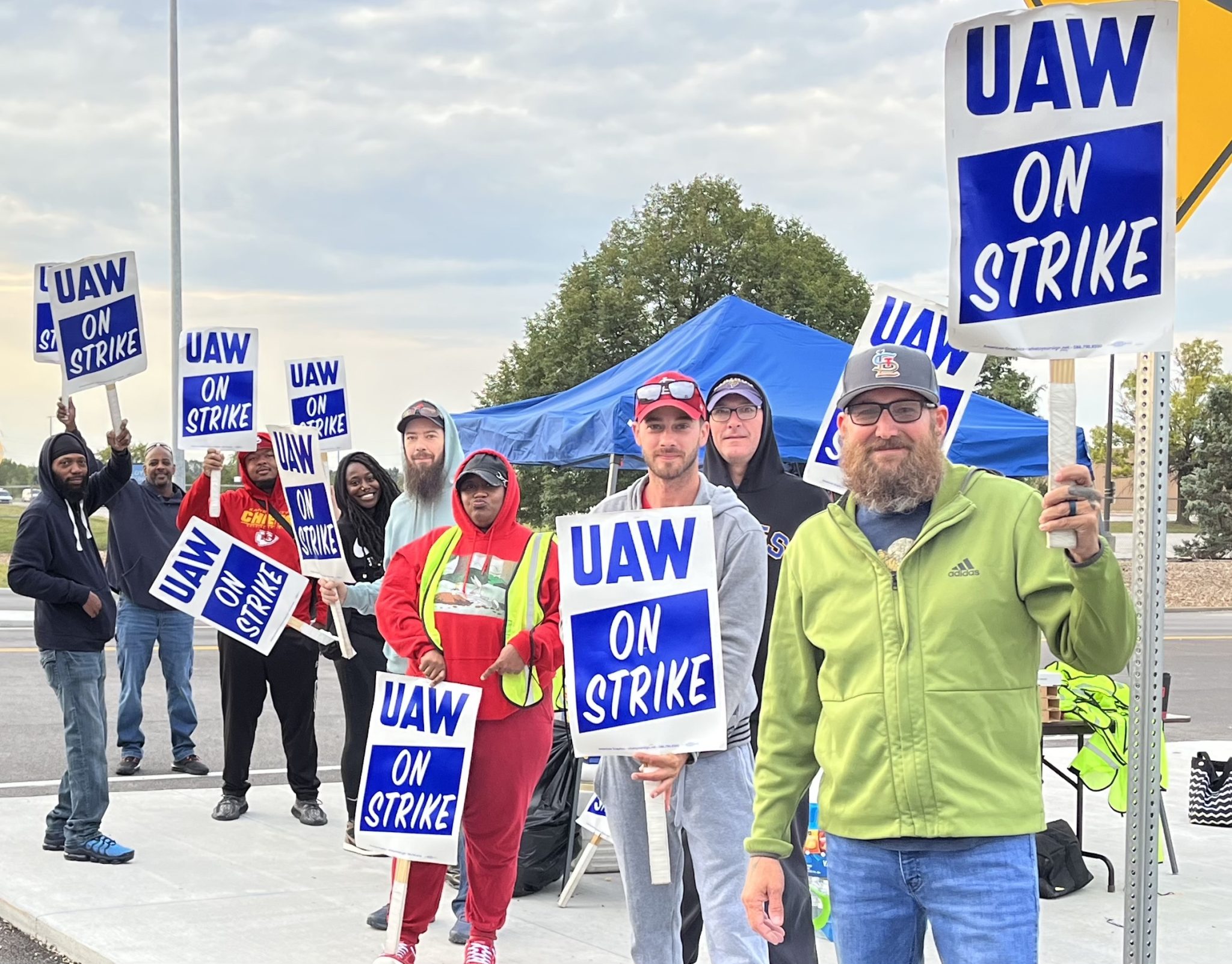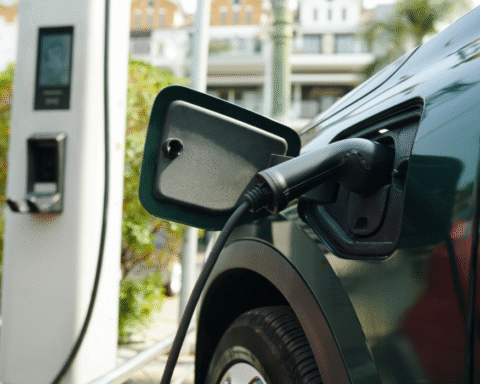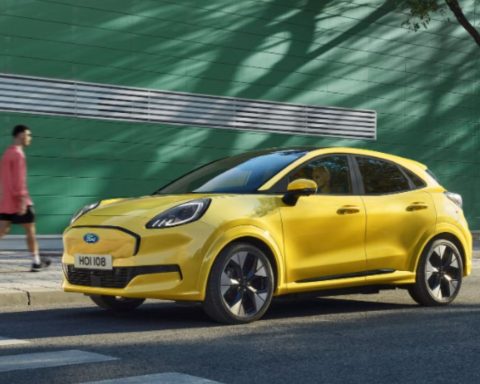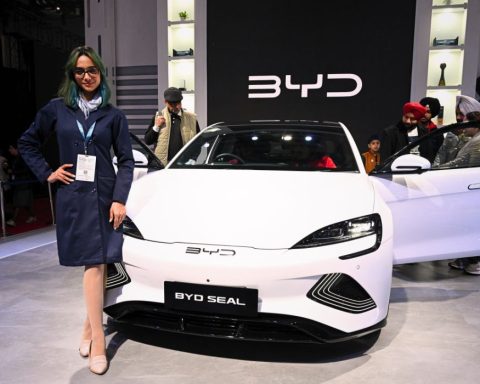As the more than 30,000 auto workers on strike in the United States showcase the need for a realistic, fair transition to electric vehicle manufacturing, populist politicians in the U.S. and beyond are seizing the moment to try to sideline that transition.
The United Auto Workers (UAW) strike began on September 15 at selected Detroit plants run by automakers General Motors, Ford, and Stellantis, and has since expanded in a bid for better wages, benefits, and job security for members.
But weeks of negotiation ensued after the Detroit Three said they could not afford to meet union demands because they needed to invest profits in the costly transition from gas-powered cars to electric vehicles, reports the Associated Press.
Push to Unionize EV Plant Workers
“Perhaps most important to the union is that it be allowed to represent workers at 10 electric vehicle battery factories, most of which are being built by joint ventures between automakers and South Korean battery makers,” AP adds. “The union wants those plants to receive top UAW wages. In part that’s because workers who now make components for internal combustion engines will need a place to work as the industry transitions to EVs.”
On October 6, the UAW announced the strike was working, after an unexpected concession by GM to allow workers at its joint venture battery plants to be covered by union contracts, Reuters reports. The union said it would hold off additional strikes against the Detroit Three, but on October 9, 4,000 unionized workers at Mack Trucks went on strike after a separate five-year deal was voted down. The total number of UAW members on strike now exceeds 30,000 across 22 states, the union says.
Politics Thwart Transition
Meanwhile, likely Republican presidential nominee Donald Trump and “a chorus” of conservative politicians in Europe have turned EVs into a campaign issue, Politico writes.
“Trump’s months of broadsides against the Joe Biden administration’s ‘draconian and indefensible’ EV policies provided a major theme for his visit [in early October] to Michigan, where he told a crowd at an auto parts plant near Detroit that abandoning the internal combustion engine would be ‘a transition to unemployment and inflation without end’.”
Some strikers have expressed support for Trump, but his popularity overall is questionable after UAW leaders distanced themselves from him.
“I don’t think the man has any bit of care about what our workers stand for, what the working class stands for,” UAW President Shawn Fain told CNN. “He serves the billionaire class, and that’s what’s wrong with this country.”
Some state and federal Republican lawmakers have gone as far as to propose taxes and regulations that would restrain EV growth. Senator Deb Fischer (R-NE) recently introduced a bill that would impose a fee of US$1,550 per vehicle for EV manufacturers. She said the fee, which would be put into a federal fund for highway upkeep, was meant to “stop EVs from freeloading.” In Texas, EV owners will have to pay $200 a year in state fees, which supporters say will make up for lost gasoline taxes, writes Politico.
The EV backlash is also growing across the Atlantic, as national politics in many countries shift in a more populist direction. In the United Kingdom, Prime Minister Rishi Sunak has announced that he will delay a climate pledge to phase out petrol and diesel cars by 2030.
And earlier this year, Germany—led by a social democratic chancellor with Green Party support—blocked the approval of European Union legislation to ban the sale of new CO2-emitting cars by 2035. Italian Transport Minister Matteo Salvini also denounced the proposed EU ban as job-destroying “madness” that would benefit China, which controls the bulk of the world’s battery minerals and manufacturing, Politico says.
Workers Want a Transition that Works
UAW leaders, on the other hand, have said they do not oppose the EV shift—as long as workers are assured of secure jobs and fair compensation, reports The Hill. In a March, 2021 white paper update, the UAW noted several “disturbing patterns” of major industry changes, particularly around the most valuable parts of the supply chain that are being replaced by mechanically simpler lithium-ion batteries sourced from overseas suppliers like China. The union has called for a strong domestic supply chain for these parts to help offset potential job losses, which Biden says is possible thanks to incentives in his climate law.
Overall, the UAW accepts that the EV transition is happening, and wants “a just transition, where it has our labour standards in there, not paying poverty wages and not a race to the bottom,” Fain said.
But the Detroit Three’s competition with non-unionized auto manufacturers like Tesla is also a factor. Already, automakers—including many whose workers are not represented by the UAW—have been increasingly likely to relocate manufacturing to southeastern states where laws are more restrictive of unionization, and where production and labour costs are cheaper. That raises concerns that the UAW’s demands could hamper the Detroit Three’s competitiveness in the EV transition, and “ultimately could cut many of the union’s members out of the shift to EV manufacturing,” writes the Winston-Salem journal.
“There’s still significant numbers of skilled labourers in the region who have weathered the ebb and flow of manufacturing jobs over the decades,” said Wake Forest University professor Mark Curtis, whose research includes the economic impact of the clean energy industry on workers.
“Automakers, and particularly the Big Three, realize that to remain competitive, they need to compete with companies like Tesla and Toyota that have far fewer unionized workers and lower labour costs.”
U.S. environmental and social justice groups supported the strike in a signed open letter to the automakers.
“We firmly support the UAW members’ demands and believe that the success of these negotiations is of critical importance for the rights and well-being of workers and to safeguard people and the environment,” the letter stated. “Only through meeting these demands will the U.S. ensure a just transition to a renewable energy future.”
This article was first published in The Energy Mix. Read the original article here.







